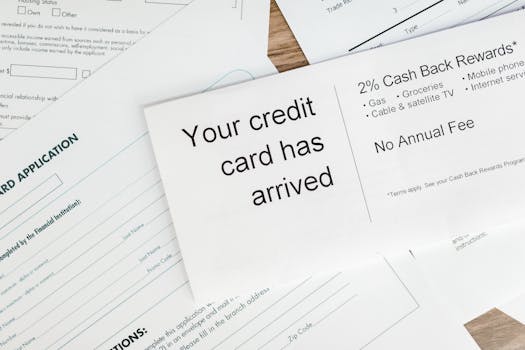Financial literacy
How to Read a Credit Report and Fix Mistakes
Learn how to read your credit report step-by-step and fix mistakes before they hurt your finances. Practical advice, checklists, and real examples to help you keep your credit score healthy and accurate.
Advertisement
If you’ve ever felt a jolt seeing your loan denied, there’s a chance your credit report played a role. Decoding this crucial document unlocks your financial health and can help you seize better opportunities ahead.
Lenders, landlords, and even some employers rely on your credit report to decide if you’re trustworthy. When errors linger and remain unnoticed, they can impact everything from mortgage approval to renting an apartment or even insurance rates.
This article breaks down exactly how to read your credit report, spot missteps, fix mistakes, and protect your finances with practical steps you can use today. Let’s explore the details together.
Deciphering Credit Report Sections Yields Actionable Insights
A credit report packs a lot of information in dense pages. Knowing where to look helps you focus on details that truly impact your financial standing and next decisions.
The summary section introduces who you are and what accounts you hold. Scanning each part, from personal data to credit inquiries, arms you with the details needed to monitor and challenge inaccuracies.
Breakdown of Personal Information
Your report’s identification section lists names, Social Security numbers, and prior addresses. Inconsistencies between old and current info signal potential identity errors or outdated records that require your attention.
If your name or address appears wrong, note the discrepancies and prepare to dispute them. Verification prevents mix-ups leading to mistaken identity on your credit report or being mistaken for someone with a different credit profile.
As soon as you see a Social Security mismatch or birthdate error, draft a note reading, “My date of birth is incorrect. Please update to MM/DD/YYYY.” Send this along with documentation for accurate, updated details.
Understanding Account History Section
The most crucial part of your credit report displays credit cards, loans, and payment histories. Each account lists current balance, recent payments, missed payments, and whether the account is open or closed.
These records show creditors how you’ve managed debt. If you see a credit card listed you never opened, highlight it immediately. Treat this as possible fraud and notify the bureau directly.
Review dates and payment patterns. If a late payment appears wrong, gather statements and prepare a simple script: “I paid on time on 03/15/22. Please correct the reported late payment.” Attach your proof for clarity.
Spotting Inquiry Activity and What It Means For You
Credit inquiries track who’s pulled your file recently. Lenders check your credit report before approving a loan. Too many inquiries in a short span can lower your score or raise lender concerns about risky behavior.
If you recognize a hard inquiry tied to a new account you opened, confirm the date aligns. But if you see unfamiliar names, suspect unauthorized pulls. Mark them for challenge using the bureau’s dispute process.
Monitoring this section regularly helps protect against accidental or deliberate misuse of your information. A scripted approach—“I did not authorize this inquiry from XYZ Lender”—sets a foundation for prompt deletion by the bureau.
| Section | What It Shows | What To Look For | Next Best Action |
|---|---|---|---|
| Personal Information | Name, address, date of birth, SSN | Correct spelling, updated address | Dispute errors, send proof of ID |
| Account History | Loans, cards, payment record | Unknown accounts, late payments | Flag and dispute, provide statements |
| Public Records | Bankruptcies, liens, judgments | Status and accuracy | Contact court, submit correction |
| Credit Inquiries | Lenders who checked your file | Unrecognized names, frequency | Challenge unauthorized pulls |
| Credit Score | Numeric summary of report | Drops unexplained, inconsistent range | Check for reporting inconsistencies |
Pinpointing Errors: A Checklist for Thorough Investigation
Identifying mistakes on your credit report may sound daunting, but methodical review transforms it into a straightforward process. Learning what red flags to watch for empowers you to catch errors others miss.
Flagging suspicious records isn’t just about correcting your file—it prevents fraud and solidifies your reputation in the eyes of lenders. From misapplied payments to accounts you never touched, every detail matters.
Recognize Patterns of Reporting Issues
Finding repeated late payments that you know you made on time or closed accounts that still appear open are classic signs there’s a reporting issue that needs fixing. Make a quick list for tracking.
Some mistakes show up as a single wrong detail; others appear as patterns. If you see errors across multiple accounts, compile a simple log for your records before starting disputes.
- Verify your Social Security number on the credit report matches your actual number so your accounts aren’t mixed with another person’s.
- Look for accounts that you’ve closed but appear open, as this can affect your credit utilization calculation negatively.
- Scan for unfamiliar addresses—flag anything that you haven’t lived at as it can indicate mixed files or ID theft.
- Check payment history for marks like “30 days late” where you have calendar evidence you paid on time each month.
- Scrutinize credit inquiries—challenge those tied to lenders you never engaged with, noting the exact dates in your complaint.
Sustained focus and a methodical checklist ensure you never overlook critical elements. Organizing suspected errors in a clear list smooths and accelerates later corrections.
Spotting Fraudulent Accounts
When strangers’ activity appears on your credit report—such as an auto loan you never signed up for—it’s an immediate sign of identity theft. Take action as soon as possible to protect your finances.
If you find a suspicious account, freeze your credit with the three main bureaus. Use this exact statement when contacting them: “I’m reporting unauthorized accounts. Please initiate a fraud alert and freeze my file.”
- Freeze your credit by contacting Experian, Equifax, and TransUnion directly, requesting a freeze for suspected fraud.
- File a police report and note the case number for reference if you have evidence of fraud or identity theft.
- Contact creditors linked to fraudulent accounts to ensure they know the charges are false and won’t attempt collections against you.
- File a formal fraud alert with each bureau, keeping a record of the confirmation numbers for your dispute file.
- Save every piece of correspondence—screen captures, mailed letters, dispute outcomes—which helps support future claims.
Each concrete step shores up your defenses, lessening both immediate loss and potential future headaches associated with identity misuse or lending missteps by others.
Tackling Disputes Swiftly with a Focused Approach
Tackling errors in your credit report means following a focused game plan—one based on precise evidence, prompt communication, and sticking with the process from start to finish for the best results possible.
Organize Documentation and Choose the Right Bureau
Review your credit report closely and highlight every error using a highlighter and sticky notes. Gather relevant bills or payment confirmations before starting any disputes with a bureau, like Experian or Equifax.
Each credit bureau processes disputes a bit differently. If the error appears across all three reports, send identical complaints to each agency. Otherwise, target only the bureau with the error, referencing its exact reporting number.
Include legible documentation—bank statements, receipts, settlement letters—attached with your dispute form. In your narrative, be concise: “This account is not mine. Please remove it and correct my credit file.”
Follow Up and Confirm Resolutions
After submitting a dispute, expect a written response within 30 days. If you don’t hear back, use your tracking numbers and receipts to call or email for status, keeping records of every conversation’s date and content.
If corrections are made, request a new, updated credit report confirming the changes. Save a digital copy for your files in case the errors resurface later or affect future applications.
Never assume a single notification is enough—sometimes errors reappear. Schedule a calendar reminder to check your credit report 60 days after a dispute, ensuring resolutions stick.
Making Credit Report Monitoring a Habit for Life
Establishing a routine for checking your credit report safeguards your financial future and catches potential problems before they escalate. Turning it into a habit builds resilience against hidden errors and identity risk.
Set Annual and Quarterly Reminders
The law lets you check your credit report for free at least once a year from each major bureau. Schedule future dates on your digital calendar—set quarterly reminders if you’ve had issues recently or spot ongoing suspicious activity.
If a new address or phone number pops up unexpectedly, investigate right away. Document any pattern of accounts or inquiries you don’t recognize, ready to dispute them at the earliest sign.
Monthly or quarterly checks after major life events—moving, divorce, new loans—add layers of precaution. Each review reduces the risk of financial surprises and strengthens your credit position.
Use Analogies and Real-Life Scenarios to Understand Patterns
Think of your credit report as your financial report card, updated each month. Missing a payment is like missing an assignment—your score drops unless you address the oversight, catching it early through regular review.
Imagine moving to a new town and finding bills sent to your old address. That’s what happens when your credit file isn’t updated—you miss key updates and risk undeserved hits to your record and credit score.
Copy the habit of reading your report side-by-side with your calendar and recent payments. If something looks wrong, the mismatch stands out right away, saving time correcting it now instead of later.
Empowering Your Credit Journey Through Proactive Steps
Understanding your credit report and fixing mistakes allows you to confidently navigate all kinds of financial opportunities, from securing a car loan to qualifying for a mortgage or even employment screening.
Your financial story changes as you build new accounts, pay down debts, or resolve disputes. Every timely review and correction helps keep your credit report accurate, your score healthy, and your reputation strong.
Take ownership: read your credit report regularly, challenge mistakes with clear documentation, and log everything for reference. These practical habits ensure your financial future stays secure, informed, and in your own capable hands.





